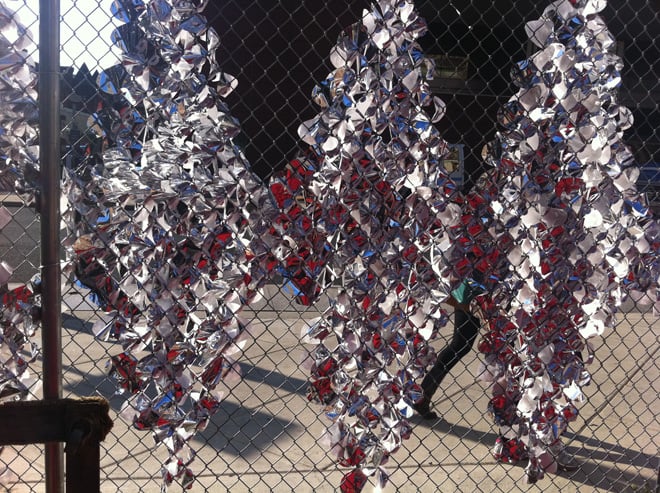Earlier this year, I was brainstorming with the executive director of Design Philadelphia, Hilary Jay. University of the Arts, which owns an enormous vacant on Broad Street that sits four blocks from City Hall and across the street from the Kimmel Center, gave her permission to install a piece of public art in the lot. The opportunity to do something exciting on the lot, not just during Design Philadelphia but the rest of the year, was incredibly exciting. Jay suggested talking about the lot with Marianne Bernstein, a veteran of Design Philadelphia festivals. Her work includes the well-received Welcome House, where video was projected on a 10’ x 10’ cube in Love Park, encouraging passersby to interact with the work. Bernstein sought to do something similar — a cube, interaction, video — but different in that her piece and performers she’d have at the site would reflect upon vacant lot issues in Philadelphia. Bernstein curated a series of performers, some of whom are like the vacant lots around the city — underused gems. Their work calls attention to the interplay of a city’s natural and human resources. We are rich in both, and yet seem to have lost a way to positively exploit them.
The UArts-designed fence rustles in the wind and reflects passersby.
Given that Bernstein’s work, The Play House, is just 10 feet square, we engaged Brian Phillips and Julie Beckman, professors at PennDesign, to help activate the vast amount of space in the lot. We worked with their students in a class called Design for Impact and gave them a nearly nothing budget to work with. The result is a minimalist, conceptual piece composed of PVC pipes mapped on the lot to form the outline of Philadelphia county. The white poles represent the 40,000 vacant lots throughout the city, blue poles signify local landmarks.
Finally, University of the Arts students used little shells of paper that flutter in the wind to mask the chainlink fence normally used to close the site off. It’s time-intensive work to rethink these vacant spaces one at a time, but the ideas surfaced here point to a way of tackling vacancy problems with little more than resourcefulness and collaboration.
Performers at This is Not a Vacant Lot.
While people perform in the space, the lot becomes a stage. It’s not like watching a street performer or a subway musician, but rather a showcase. Take the trio above: they treated their time in the Play House like it was an audition for American Idol. Congregating around the singers were friends and family, but also a UPS guy who stopped to watch. A couple who were clearly tourists. On display was not just three singers trying to get attention just two doorsteps from Motown legends Gamble & Huff, but Philadelphia and what it could be.

Diana Lind is the former executive director and editor in chief of Next City.



.JPG)














